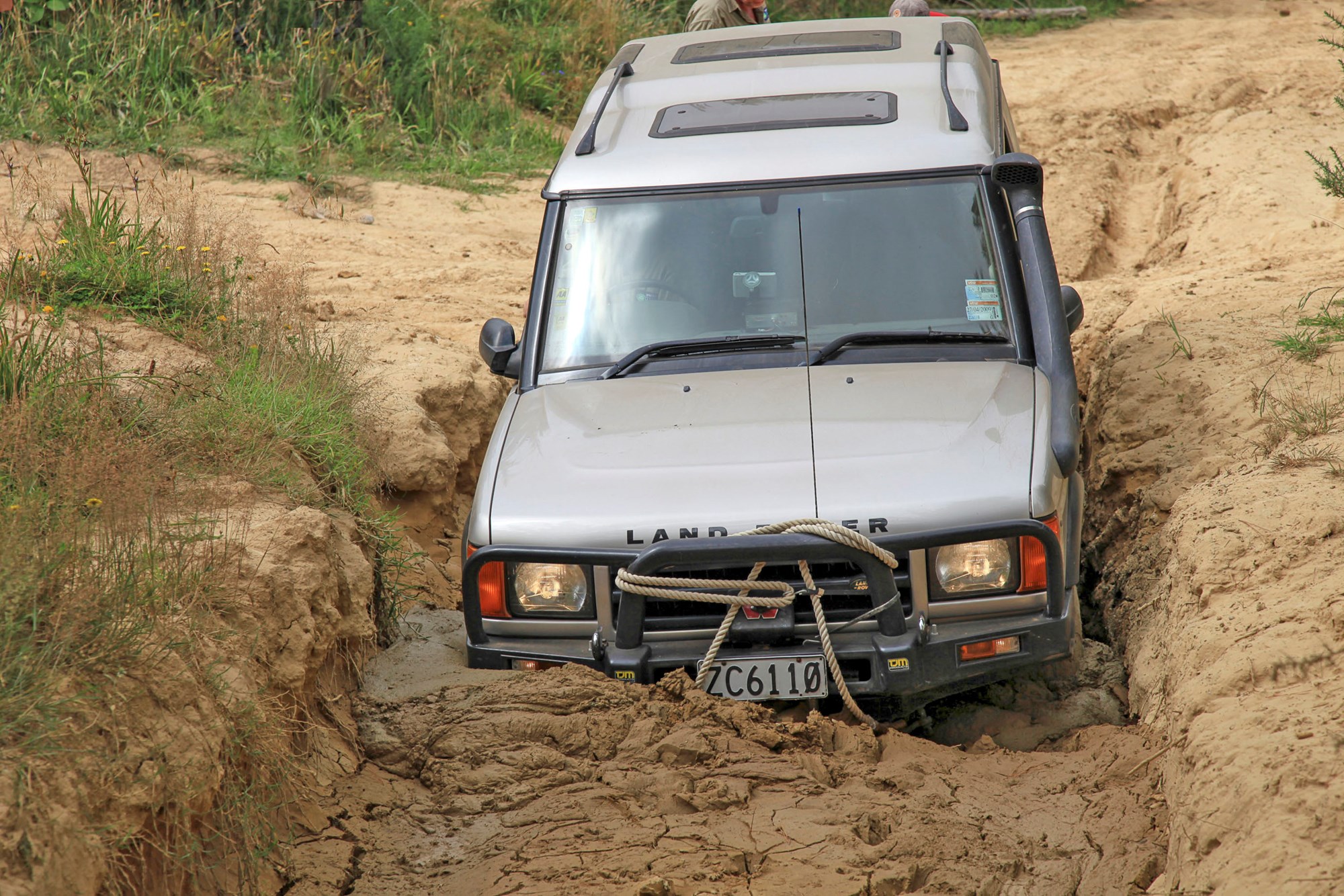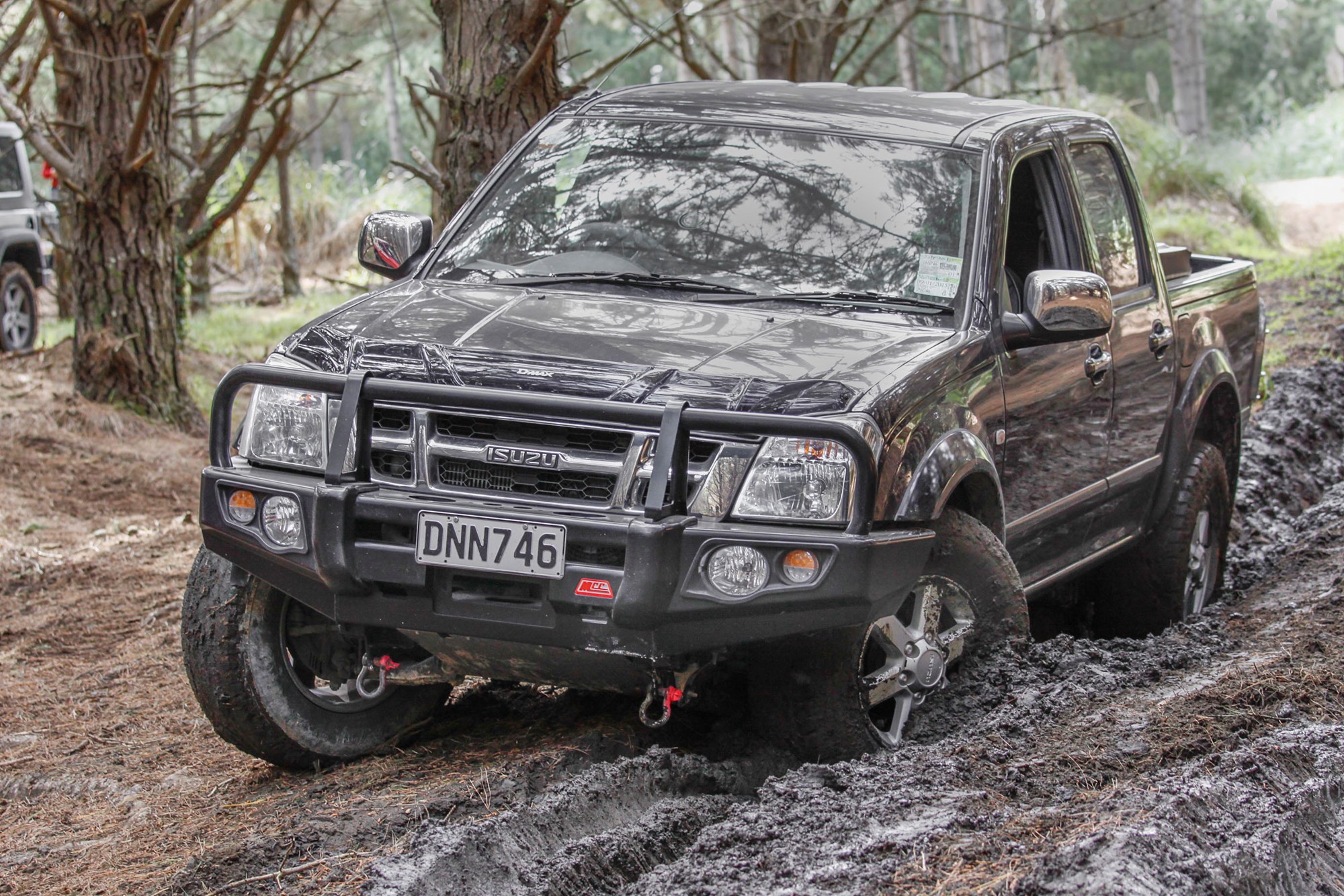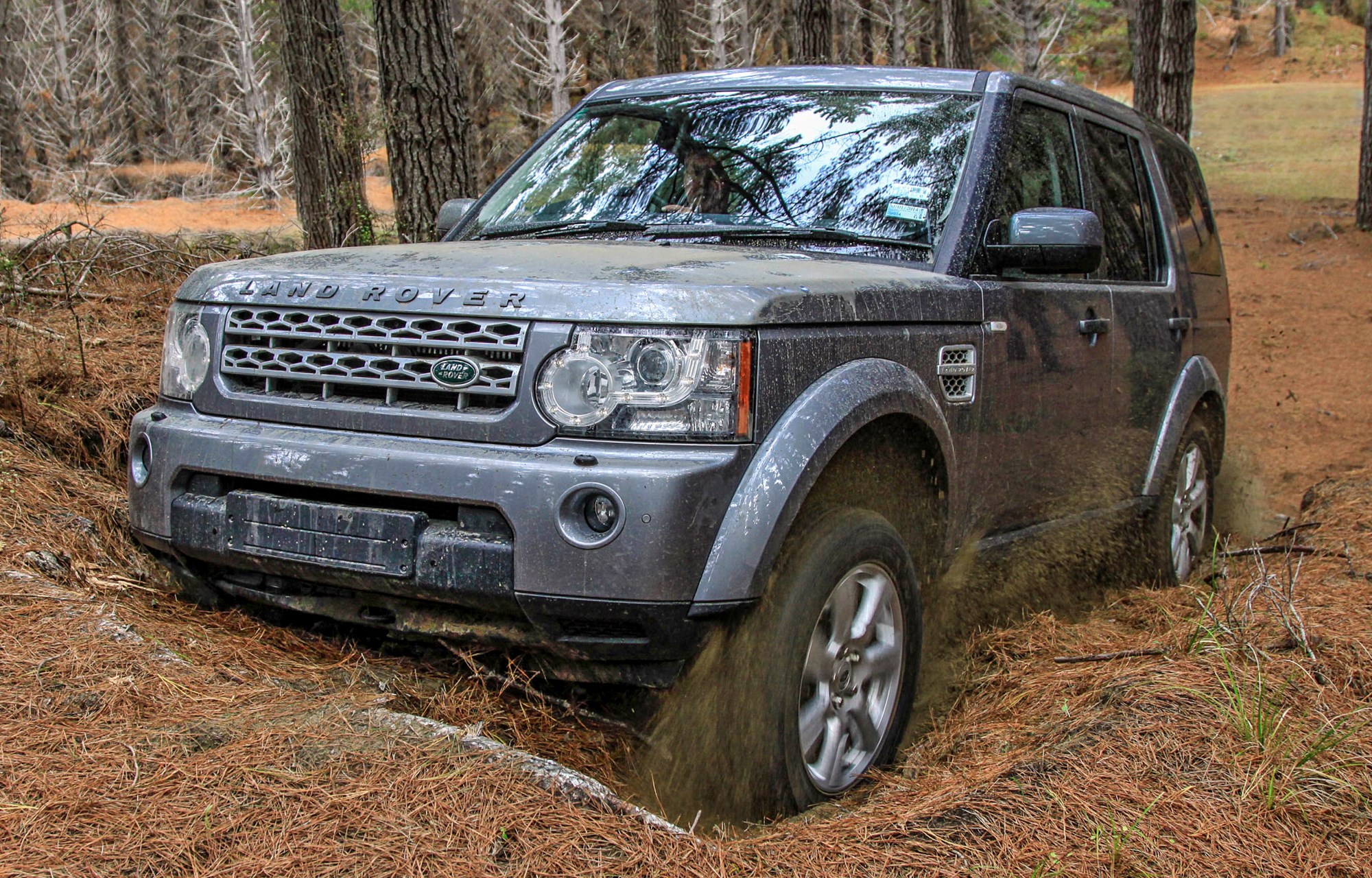Driving off the road requires special techniques
You’ve taken the family along this forest track in the new SUV and now it’s stuck. Jeez, this never happens in the TV commercials.
Despite having four-wheel drive, many SUVs and utes aren’t that good off-road in anything other than mild conditions. They lack ground clearance, their overhangs are too long, many won’t have low gearing, their street tyres will clog with mud and become no-traction slicks.
But don’t blame the tool for everything. Driving off the road requires special techniques, knowledge and practice. It’s not something most drivers can just do, and get away with it, when the going suddenly gets tough. If you want to go bush, best get some training first, from a specialist off-road trainer or a 4WD club.

Never go off-road alone and bring the right equipment to pull you free.
Go on some of the many organised off-road safaris held over summer; they’re a great way to get experience while seeing what lies far beyond the tarseal.
Don’t ever set off on a solo trip. There’s safety in numbers: if you get stuck, another member of the group can pull you out or lend other help.
Here are five ways to avoid getting stuck.
1. Don’t be too smart for your own good. 4WD vehicles instil a feeling of confidence. But tracks and trails have a habit of turning nasty around the next corner, with unexpected deep ruts, soft spots, sharp climbs, rocks, large tree roots, dangerous drop-offs, steep side slopes — and that’s all before reaching the really hard stuff. When you get to the first dodgy part, cut your losses, turn back and enjoy the rest of the day. No way? Well, proceed to point two.
2. Get out and look. You can’t get a proper view of the problem and how to tackle it from behind the steering wheel. Walk the obstacle. Does it lead to something even more difficult? Does your vehicle have the ground clearance? Can you see a way to get through, over or around, other than charging at it head-on?
3. Have someone outside acting as a spotter and guide. Even seasoned off-roaders need someone to watc where the tyres are when negotiating tricky bits.
4. SUV owners seem to think driving through water-filled mudholes on track is great fun — and so it can be, except all the acquired muck has to be cleaned off once home and the murky water may hide a sudden dip that’ll stop you dead. Same thing for beach sand — a real blast one minute, bogged to the door sills the next, and the tide’s coming in fast.
5. Don’t even think of driving in deep water, such as a river, without first walking the route or watching someone else do it in a similar vehicle and not getting stuck. Then go exactly where they went. Without a snorkel that takes air up from near the vehicle’s roofline you risk water getting into the fuel mix and blowing the engine big-time. Diesels, with their high compression ratio, are particularly susceptible.

Never go off-road alone and bring the right equipment to pull you free.
Those points are all well and good, but now we’re bogged. How the heck do we get out? Does the AA make calls out here? What, there’s no cellphone coverage? Here’s a how-de-do, to quote The Mikado, but at least this one doesn’t involve execution or being buried alive.
1. Presumably you left home with appropriate equipment, like a spade or shovel and sturdy pieces of wood to provide a base for the car’s jack, and to help extend its reach. It’s surprising how many recoveries can be effected with lifting and/or digging. Be careful working with the jack.
2. Take time to calmly assess the situation before you try anything. Make a recovery plan rather than going off half-cocked. Does the plan put the vehicle in danger of damage? Are there risks to people? Don’t you now wish the front-seat passenger was an OSH adviser?
3. Lowering tyre pressures can win some traction. The tyre gains a bigger footprint as well as being able to better “wrap” itself around an obstacle: naturally, you’ll have a tyre pressure gauge in the glovebox. Don’t go below 20psi if the tyres are low-profile and tubeless, as most are, otherwise they may come off the rim. Drive gently on partly deflated tyres and find some way of re-inflating before going back on the road.

4. Another vehicle can possibly tow you free, assuming you’ve followed point three in the advice about not getting stuck, and if you’ve brought a rope. There are special recovery straps that stretch and use kinetic energy to multiply pulling power, but you probably won’t have one. Just as well, because your SUV also probably won’t have proper chassis-mounted recovery points; the energy from one of those stretchy straps could tear off whatever it’s attached to. So-called “recovery points” on most SUVs are no more than tie-downs but can possibly be used for a gentle tug with a regular strap or rope. Be very careful when tugging at a stuck vehicle. Keep bystanders away.
5. Take your time. A recovery may fail the first, second or tenth time. Don’t get flustered; take a break and think things through. Have one person in charge; few things thwart a recovery more than people yelling conflicting instructions and following different ideas.




